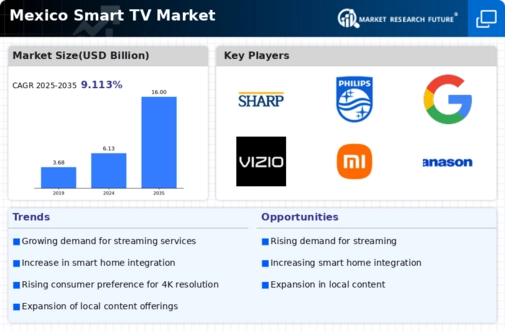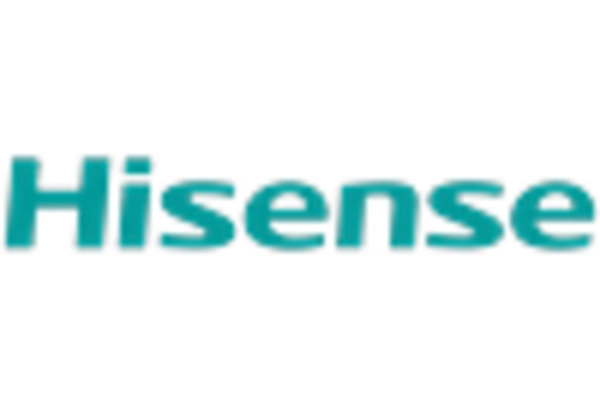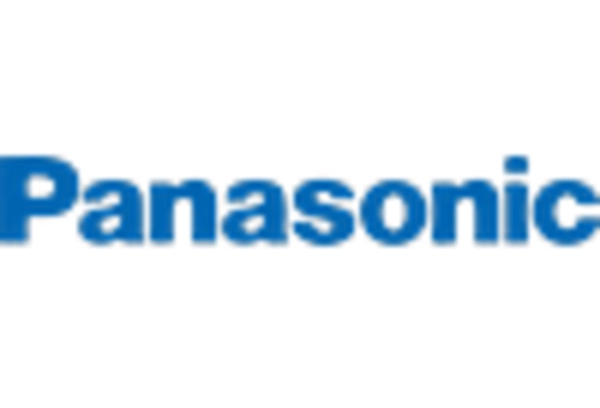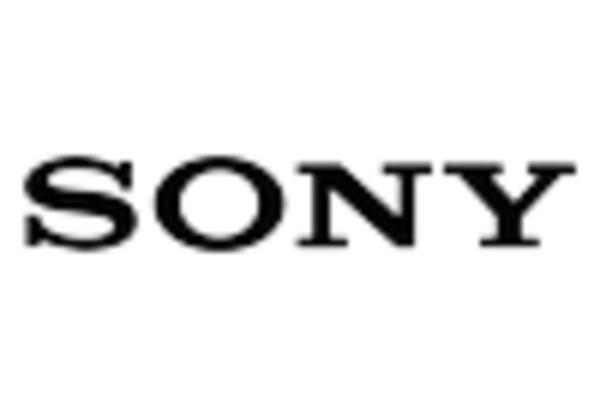Rising Consumer Income Levels
In Mexico, rising disposable income levels are contributing to the growth of the smart tv market. As of 2025, the average household income has increased by approximately 15% over the past five years, allowing consumers to invest in higher-quality electronics. This trend suggests that more households are willing to purchase premium smart TVs equipped with advanced features such as 4K resolution and smart home integration. The increasing purchasing power of the middle class is particularly noteworthy, as this demographic is more likely to prioritize entertainment and technology in their spending. As a result, the smart TV market is set for expansion., driven by consumers seeking enhanced viewing experiences and the latest technological advancements.
Competitive Pricing Strategies
Competitive pricing strategies among manufacturers are influencing the smart tv market in Mexico. As various brands vie for market share, they are increasingly offering smart TVs at more accessible price points. This trend is evident in the growing availability of budget-friendly models that still provide essential smart features. As of 2025, the average price of smart TVs has decreased by approximately 10% compared to previous years, making them more attainable for a broader audience. This pricing strategy is likely to attract first-time buyers and those upgrading from traditional televisions. Consequently, the smart tv market is expected to expand as affordability becomes a key factor in consumer purchasing decisions.
Increasing Internet Penetration
The expansion of internet access in Mexico plays a crucial role in the smart tv market. As of 2025, approximately 80% of households have internet connectivity, which facilitates the adoption of smart TVs. This connectivity allows consumers to access a plethora of streaming services and online content, thereby enhancing the appeal of smart TVs. The growing number of internet users, particularly among younger demographics, indicates a shift towards digital consumption. Consequently, the smart TV market is expected to see significant growth. as more consumers seek devices that can seamlessly integrate with their online lifestyles. The increasing availability of high-speed internet further supports this trend, making smart TVs more attractive to consumers who prioritize streaming and online gaming.
Shift Towards Home Entertainment
The ongoing shift towards home entertainment in Mexico significantly impacts the smart tv market. With more consumers opting to enjoy movies, series, and gaming at home, the demand for smart TVs has surged. As of 2025, the home entertainment sector has seen a growth rate of approximately 20% annually, indicating a strong preference for in-home viewing experiences. This trend is further fueled by the availability of diverse streaming platforms and content tailored to local audiences. Consequently, smart TVs, which offer easy access to these services, are becoming essential household items. The smart tv market is likely to benefit from this cultural shift, as consumers increasingly seek devices that enhance their home entertainment setups.
Technological Advancements in Display and Features
Technological advancements in display quality and smart features are driving the smart tv market in Mexico. Innovations such as OLED and QLED technologies provide superior picture quality, which appeals to consumers seeking immersive viewing experiences. As of 2025, approximately 30% of smart TVs sold in Mexico feature these advanced display technologies, reflecting a growing consumer preference for high-definition content. Additionally, the integration of voice control and artificial intelligence in smart TVs enhances user experience, making these devices more appealing. The continuous evolution of technology suggests that the smart tv market will remain dynamic, with manufacturers competing to offer the latest features and capabilities that cater to consumer demands.
















Leave a Comment